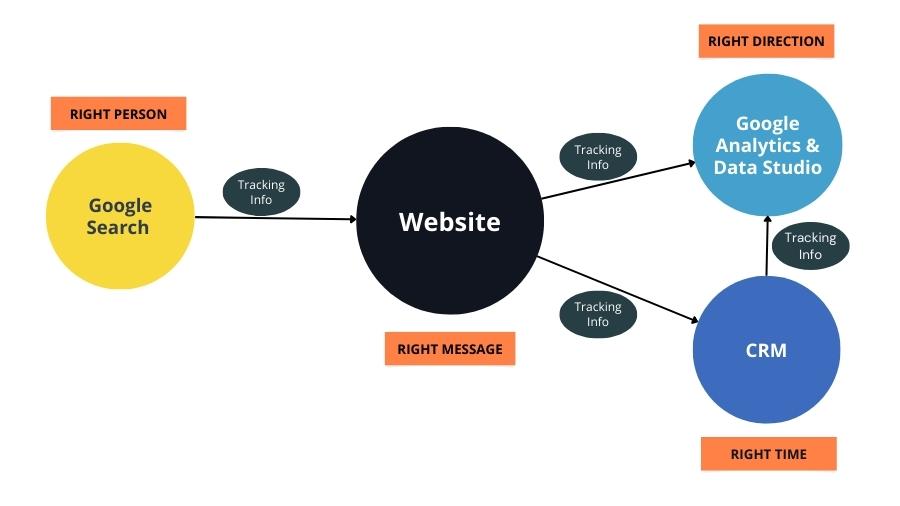The concept of a minimum viable solution has the potential to simplify a complex system.
The benefit of this simplification is that you can better understand the critical building blocks of a marketing solution and how these building blocks relate to each other.
In this blog post, we are looking at the RIGHT PERSON step of the DAM RIGHT process, and our minimum viable solution will use the Google Search Engine to target your ideal customer:

Google search is often the best place to begin
For most businesses, Google Search is still the best way to generate leads and Google Ads SERP adverts are the best place to start.
This is especially true for companies with clients that have an urgent need for their services.
For example, Marketing Clinic has implemented a series of Google Search campaigns for a company that cleans canopy and exhaust systems for restaurants. Often, a restaurant manager will urgently search Google for a service supplier once they realise they are non-compliant and are at risk of a fine or fire. The search, quote, and service booking can all happen in one phone call without the need for lead nurturing.
However, it would be a mistake to only use Google SERP adverts for urgently needed services. Even in the example above, the Canopy & Exhaust cleaners would be leaving money on the table if they did not follow up with leads that did not immediately convert to clients on the first touch point.
Lead nurturing is an essential part of the minimal viable Google Search marketing system and can often increase revenue and profits by over 100% when compared with just relying on website visitors who are ready to purchase on their first website visit.
Your website & CRM work together to track progress & provide clarity
A good marketing platform like SalesStream will provide call-tracking functionality so that when a call from Google Ads comes through, the following information will be auto-entered into the CRM:
- Phone Number
- Google campaign that triggered the phone call
- Keywords searched
This information is critical when determining which campaigns are generating leads and clients and using this information to scale up.
The salesperson can enter the lead name into the newly created CRM record above during the phone call. Once the lead is in the CRM, we can use a range of strategies to nurture the lead through to client status including the use of automated email nurturing campaigns, Google Remarketing, and Facebook Retargeting.
What if they don’t ring or take the lead magnet? Are they lost forever?
All is not lost if a potential client clicks on an advert and for whatever reason does not call or enter their email address for a meeting or lead magnet.
Your website can tag the client so that you can show adverts to the client on websites as they browse the internet, as well as show them adverts on Facebook and LinkedIn, even though you don’t have their phone number, name or email address.
This is often the cheapest form of advertising. Remember that these people have visited your website and a good percentage are therefore potential clients. Many of these people needed more time to think before calling or they simply got distracted on their first visit to your website.
A second or third touch point in the form of an advert appearing on an interesting website is all they need to remind them of your service and give you a call.
Nurturing leads to clients using email sequences
Lead nurturing is the process of helping people through their decision-making process so that they can decide if your service is the right service to solve their problem.
As mentioned previously, many leads may have been distracted on their first visit to your website and they simply need a reminder to make a service booking. Your remarketing campaigns, or the first or second email in an email nurture sequence will hopefully get these guys over the line.
Other leads may need more information before they are ready to make a decision. In this case, a series of automated emails connected to informative blog posts will be more helpful. These emails and blog posts can help you overcome any objections the lead may have, or clarify the lead’s problem and your solution. Other emails in the sequence can be used to position you as the expert and an authority in the industry.
Follow up with an email sequence, then follow up some more – this is important!
In a busy world, the Marketing Clinic’s experience is that many leads will take action after a fourth touch point.
The secret is to keep your company front-of-mind without becoming an annoyance by providing useful information via email and remarketing adverts for at least 8 weeks after a milestone event.
Examples of a milestone event include the downloading of an eBook from your website or the provision of a quote for your services.

